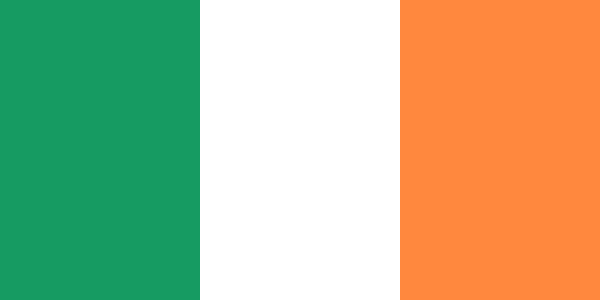Flag_of_Ireland.svg (ملف إس في جي، أبعاده 600 × 300 بكسل، حجم الملف: 400 بايت)
وصلات
الصفحات التالية تحتوي على وصلة لهذه الصورة:
- ألمانيا
- قائمة الدول
- فرنسا
- الدول الأعضاء في الأمم المتحدة
- المجر
- سلوفاكيا
- ألبانيا
- أندورا
- أوكرانيا
- روسيا البيضاء
- بلغاريا
- أيسلندا
- سلوفينيا
- رومانيا
- الدانمارك
- سويسرا
- الفاتيكان
- سان مارينو
- إسبانيا
- موناكو
- أوروبا
- أذربيجان
- بطولة كأس العالم لكرة القدم 2002
- تركيا
- تشيك
- جورجيا
- أرمينيا
- مولدافيا
- جمهورية أيرلندا
- البوسنة والهرسك
- قائمة الدول حسب المساحة
- الجبل الأسود
- بريان مكفادين
- أوروبا الشمالية
- كوسوفو
- آرسنال
- روسيا
- قالب:دول أوروبا
- مانتشستر يونايتد
- أستون فيلا
- نادي ليفربول
- قالب:إحصاء سكاني لدول أوروبا
- جائزة نوبل في الأدب
- مطار فاس سايس الدولي
- مطار أكادير المسيرة
- مطار مراكش المنارة
- ترتيب عالمي للدول حسب حرية التعبير
- بوابة:أوروبا
- بوابة:تاريخ أوروبا
- ألعاب أولمبية صيفية 1904
- ألعاب أولمبية صيفية 1948
- قالب:IRL
- بوابة:أوروبا/دول أوروبا
- بطولة كأس العالم لكرة القدم 1994
- بوابة:تاريخ أوروبا/تاريخ دول أوروبا
- بيتزا هت
- جمهورية صربيا
- نادي سندرلاند
- قالب:كق جمهورية أيرلندا
- بطولة كأس العالم لكرة القدم 1990
- نيللي فرتادو
- قائمة العواصم الوطنية
- نادي بورتسموث
- تشارلتون أثليتيك
- نادي ليفانتي
- يوروكونترول
- بريزون بريك
- لووس
- أول غود ثينغز (كوم تو أن إند)
- قالب:أيرلندا
- دبلوماسية المغرب
- ألعاب أولمبية صيفية 2000
- قالب:مجموعة قوالب
- قالب:مجموعة قوالب/doc
- ألعاب أولمبية صيفية 1980
- ألعاب أولمبية صيفية 1984
- قائمة الدول حسب العدد الإجمالي للقوات العسكرية
- قائمة الدول حسب قيمة النفقات العسكرية
- قائمة الدول حسب عدد السكان
- قائمة الدول حسب نسبة القادرين على القراءة والكتابة
- قائمة الدول حسب معدل جرائم القتل
- مستخدم:White Cat/Faces and places
- كأس الأمم الأوروبية لكرة القدم 2008
- مستخدم:White Cat/Gen
- مستخدم:White Cat/ar
- مستخدم:White Cat
- فورتسبورغ
- قائمة الدول حسب كثافة السكان
- غيف إت تو مي
- منتخب أيرلندا لكرة القدم
- قائمة الدول حسب الناتج القومي للفرد
- تصفيات أوروبا لكأس العالم لكرة القدم 2010
- مؤشر التنمية البشرية
- قالب:معطيات أيرلندا
- دولة حيادية
- التجاوب الدولي مع استقلال كوسوفو
- قائمة دول تعتبر الإنجليزية لغة رسمية
- قائمة الدول حسب عدد الدول المجاورة
- قائمة الدول حسب نسبة الفقراء من السكان
- قائمة الدول حسب نسبة الجنس
عرض المزيد من الوصلات إلى هذا الملف.

